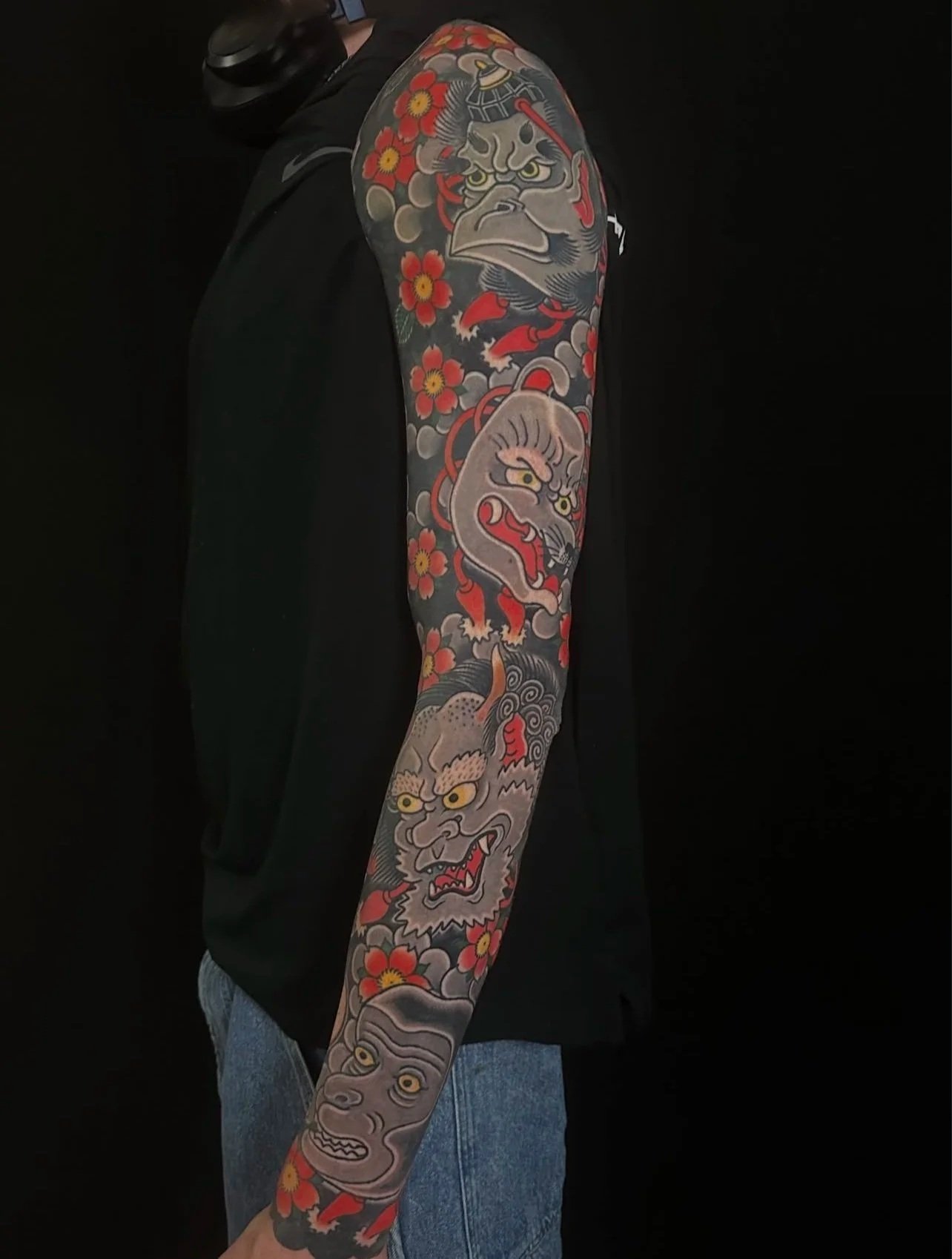BLOG
Fine Line Marine Life by Veronica
Veronica’s fine line marine tattoos are inspired by the calm, movement, and depth of the ocean. Her approach is soft and intentional, using clean, delicate lines to create designs that feel light on the skin while still carrying strong meaning. Rather than bold outlines or heavy shading, her work focuses on flow, balance, and simplicity.
She’s drawn to ocean creatures for their symbolism and natural movement, grace, resilience, patience, strength, and transformation. Veronica captures these qualities through subtle detail and thoughtful composition, allowing each tattoo to feel peaceful and expressive without being overpowering.
Every piece is designed to work with the body’s natural lines, making the tattoo feel like it belongs exactly where it’s placed. The result is artwork that’s timeless, elegant, and deeply personal. For anyone who feels connected to the ocean and prefers a refined, minimalist style, Veronica’s fine line marine life tattoos offer a beautiful way to carry that connection with you.
Goro Nyudo Masamune by Horiyama
The body suit is steadily taking shape, two half sleeves and one full leg complete, with one more leg still ahead. But the true centrepiece of this evolving project is the full back piece, dedicated to one of Japan’s most revered historical figures: Gorō Nyūdō Masamune.
Masamune, active during the late Kamakura period (13th–14th century), is widely regarded as the greatest swordsmith in Japanese history. His blades—known collectively as Masamune swords, were prized not only for their exceptional sharpness and durability, but also for their remarkable beauty. Unlike many weapons of the time, his swords were said to possess a “benevolent” spirit, cutting cleanly without the aura of malice found in more aggressive blades. This unique balance of power and purity elevated him from craftsman to legend.
He founded the Sōshū-den style, which influenced generations of smiths and shaped the trajectory of Japanese swordmaking. Many of his students would go on to become masters themselves, and stories of his skill, humility, and meticulous discipline continue to define him centuries later.
For a back piece, Masamune is a perfect fit, his story is one of mastery, dedication, and timeless artistry. The design captures him in a moment of focused creation, surrounded by traditional elements that echo the forge: flowing textiles, steel-tempered patterns, and classic Japanese background work that binds the composition together.
Japanese mask arm sleeve by TomTom
In Japanese Irezumi, placement shapes meaning, and a sleeve arranged from Tengu at the top to Saru at the wrist creates a flowing descent through different layers of myth. With sakura blossoms drifting through the background, the entire piece gains a sense of impermanence, beauty, and seasonal renewal.
The sleeve opens with the Tengu on the upper arm or shoulder, the mountain spirit known for discipline, martial skill, and watchful protection. Perched above the other masks, it acts as a guardian looking down over the design. Its bold features set the tone against a scattering of soft cherry petals.
Below it sits the Kitsune, the shapeshifting fox spirit whose intelligence and mystery bridge the realms of illusion and clarity. The delicate forms of falling sakura emphasise the Kitsune’s elegance and create a smooth transition between the upper and middle sections of the arm.
Moving onto the lower arm lies the Oni, fierce yet protective. The cherry blossoms around it soften its intensity without diminishing its power, illustrating the balance between inner turmoil and the beauty found in confronting it.
The sleeve concludes with the Saru near the wrist, the playful monkey spirit symbolising cleverness and adaptability. As petals swirl around the mask, the energy becomes lighter, grounding the design in movement and human warmth.
Together, the Tengu, Kitsune, Oni, and Saru, woven through drifting sakura; create a unified story of vigilance, transformation, strength, and spirited resilience.
Native Birds by Veronica
New Zealand’s native birds are perfect for fine line tattoos; delicate, elegant, and full of character. Veronica’s designs capture their natural forms with clean lines and subtle detail, whether it’s a standalone bird or combined with florals, ferns, and other native elements.
Each bird carries its own meaning: the pīwakawaka (fantail) brings curiosity and adaptability, the tui represents expression and individuality, the pūkeko embodies confidence, the kiwi stands for quiet strength, and the kōtare (kingfisher) reflects patience and focus.
Her tattoos can be small and minimalist or part of a larger composition celebrating Aotearoa’s nature. By combining birds with native plants or subtle natural motifs, Veronica creates designs that feel both personal and distinctly New Zealand—perfect for anyone looking for a piece that’s meaningful, elegant, and timeless.
Tako and Fugu sleeve by Horiyama
Japanese tattoos, Irezumi, are known for their deep symbolism and bold, flowing designs. A sleeve featuring an octopus and puffer fish is not only visually striking but also rich in meaning, blending intelligence, mystery, and hidden strength.
The octopus (tako) in Japanese tattoo art represents intelligence, adaptability, and the ability to escape danger. Its tentacles add movement and flow to a sleeve design, wrapping naturally around the arm. In folklore, it also embodies transformation and trickery, ideal for someone who values wit and flexibility.
The puffer fish (fugu) offers a playful contrast. Often seen as a symbol of duality and inner strength, it may look harmless but is highly toxic—a reminder that appearances can be deceiving. It’s a fitting emblem for those who present a calm exterior while hiding resilience or risk-taking underneath.
Together, the octopus and puffer fish create a balance of cunning and caution, movement and tension. Surrounded by traditional elements like waves, wind bars, and coral, they form a sleeve that tells a deeply personal story—one of survival, strength, and the mystery of the sea.




















